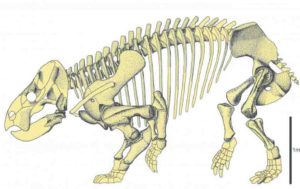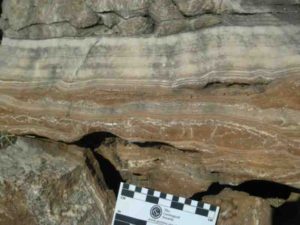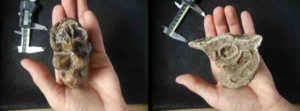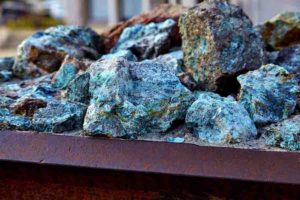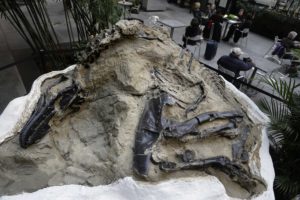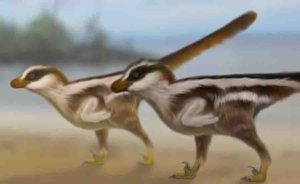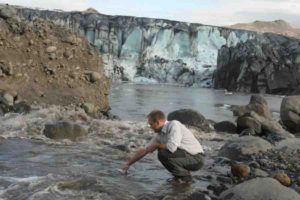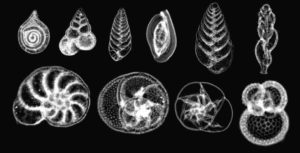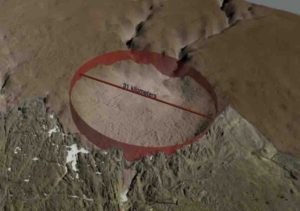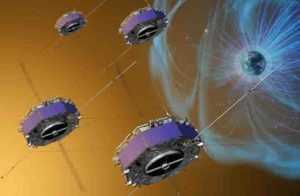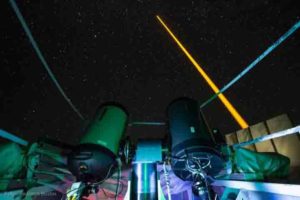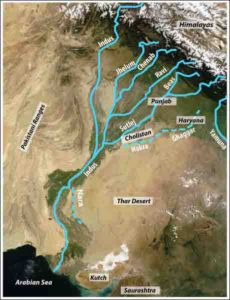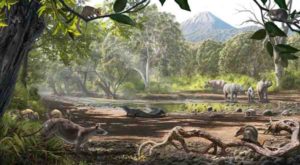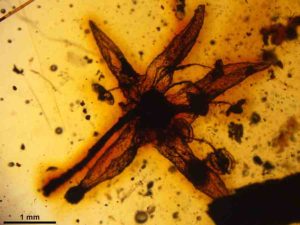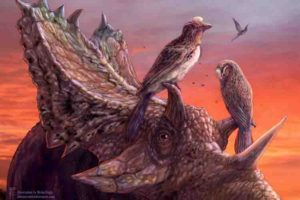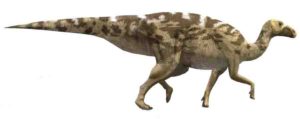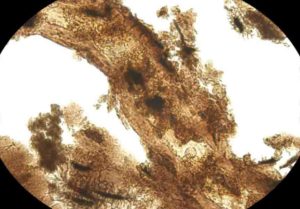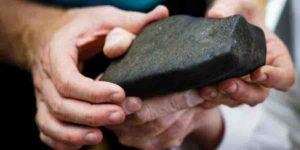
Wits researchers go on a mission to describe, classify and trace the 4.5 billion-year-old history of a meteorite that landed in Madagascar.
Researchers from Wits and colleagues from the University of Antananarivo in Madagascar are on a “detective mission” to describe, classify and trace the history of a meteorite that landed in and around the small town of Benenitra in southwestern Madagascar shortly before the lunar eclipse on 27 July 2018.
News of the event in this remote area was brought to the attention of a Wits Geosciences graduate, Tim Marais, who was travelling in the area a few days after the meteorite fall. He collected some preliminary eyewitness accounts that reported a bright meteor fireball, a loud explosion and a rain of rock fragments that fell in and around Benenitra that, fortuitously, appear to have missed all people and buildings, and he was able to acquire several small fragments that residents had managed to locate. He delivered these to Professors Roger Gibson and Lewis Ashwal in the School of Geosciences at Wits and asked them to verify their extra-terrestrial origin. The signs of a dark fusion crust and small spheres in the rock matrix that were visible on broken surfaces appeared promising and the School’s Senior Technician, Caiphas Majola, was immediately commissioned to prepare a thin section of one of the fragments for microscopic analysis.
Tracing the history
Assessment of the thin section confirmed that it was, indeed, a meteorite and, more specifically, a relatively common type called a chondrite, referring to the small spherical chondrules that it contains. This established that the meteorite dates from the formation of our Solar System about 4.56 billion years ago.
At the same time, a news report appeared in the local Triatra Gazettenewspaper on 4 August regarding the eyewitness reports and showing a large specimen with a similar black fusion crust. To corroborate the event scientifically, the team approached Dr. Andry Ramanantsoa of the Laboratory of Seismology and Infrasound at the Institute and Observatory of Geophysics at the University of Antananarivo to investigate if there was any evidence that a significant explosion occurred in the atmosphere above Madagascar sometime in the evening of 27 July. Ramanantsoa was able to confirm, using infrasound data from the international Comprehensive Nuclear Test Ban Treaty Infrasound Station IS33 outside Antananarivo, that there had, indeed, been an “upper atmosphere energy release event” at 5.16 p.m. GMT (7.16 p.m. local time). Furthermore, he was able to identify that it occurred in a direction south-southwest of Antananarivo – the exact bearing of Benenitra.
The next step was to see if the blast wave from the atmospheric detonation was sufficiently large to have caused a ground vibration that could be detected by geophysical seismometers. For this the team turned to Dr. Andriamiranto (Ranto) Raveloson, a Postdoctoral Fellow and Technical Manager of the Africa Array Seismic Network that is co-ordinated from Wits. He was able to confirm a very faint seismic tremor at 5.17 p.m. GMT on the same night. The final confirmation that the fragment was related to a fall on 27 July was obtained from Dr. Matthias Laubenstein from the Laboratori Nazionali del Gran Sasso at the Istituto Nazionale di Fisica Nucleare in Italy, who measured the meteorite for rare cosmogenic nuclides that are created when an asteroid in Space is bombarded by high-energy cosmic rays. His measurements showed high levels of cosmogenic nuclides, consistent with the meteorite having entered Earth’s protective atmosphere only within the past few months.
Based on these findings, the team has submitted a request to the international Meteoritical Society to officially name and register Africa’s newest meteorite – Benenitra—on its database.
Classifying Africa’s newest meteorite
Ashwal and Gibson have refined the meteorite classification as an L6 chondrite. The name refers to the fact that it contains a low amount of iron (the “L”), and that it contains recognizable chondrules. Chondrules are the original building blocks of rocky bodies – such as asteroids and the Inner Planets – in Space. As these bodies grew larger, heat built up inside them – partly through gravitational collapse and partly because of radioactive elements – which caused the metals and chondrules to recrystallise and maybe even melt. Where temperatures were sufficiently high to melt the body, the denser metals were then able to settle towards the core of the body, with the less dense silicate melts rising towards the surface. Eventually the body would have cooled down sufficiently to solidify. The Benenitra meteorite appears to have got quite hot (the number “6” refers to the high amount of recrystallisation that occurred within the chondrules owing to this heating process) but only melted partially, allowing some of the chondrules to survive.
Poor Man’s Space Probe
The meteorite also has a thin shock-melt vein that is most likely related to a collision with another asteroid that shattered the original body and sent the fragment spinning off on its eventual collision course with Earth.
“Meteorites are commonly called The Poor Man’s Space Probe, because they deliver rocks from Outer Space to our door for free, where we can study the birth and history of other parts of our Solar System” says Gibson. The Benenitra meteorite fragment is being subjected to a range of other tests to establish properties such as its density and magnetism, and the team plans to write the results up soon in a scientific paper.
“The Benenitra meteorite is a new Space rock, but it is also a witnessed fall, which makes it part of special group of meteorites. It is part of our collective heritage as a species, planet and Solar System. It fell in a remote area that will henceforth be recognised internationally for the event on the evening of 27 July. Our project provides an opportunity to further strengthen scientific collaboration in the SADC region. Ultimately, one of our goals is to inform the people of Benenitra about the significance of what they witnessed and thus build greater awareness of science,” says Gibson.
Note: The above post is reprinted from materials provided by Wits University.


